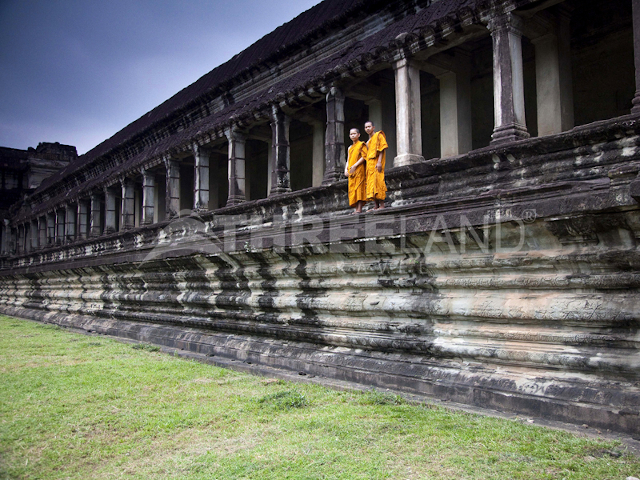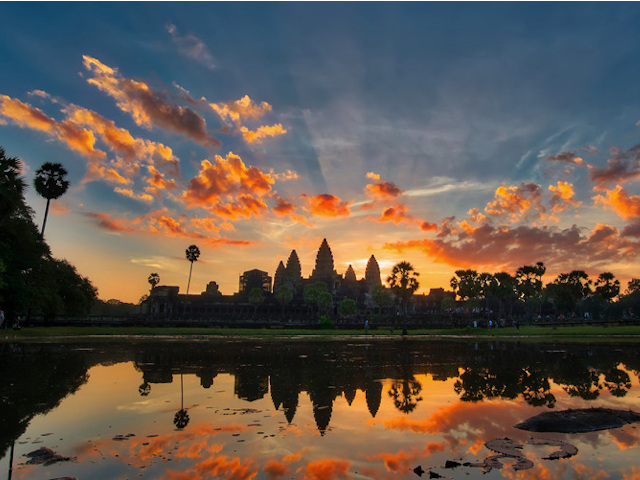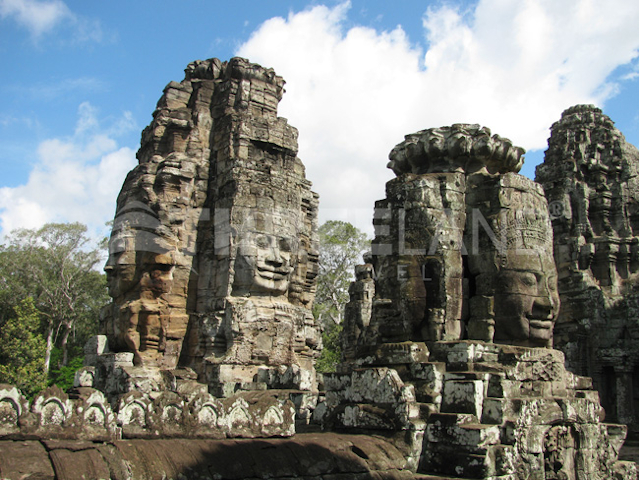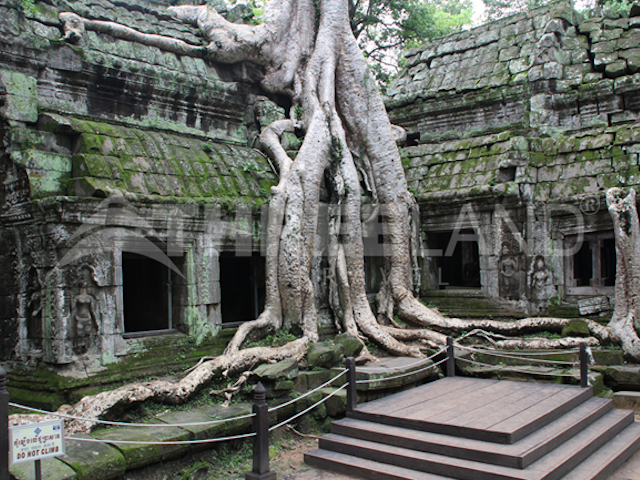Cambodia is a popular stop on the travel route in the Southeast Asia. It has been put on the map by the incredible temples of Angkor, and they certainly don’t disappoint. We all know that the giant Angkor Complex is a tourist attraction with many anc
TABLE OF CONTENTS
1
1/Angkor Wat temple
2
2/Angkor Thom (Bayon & small temples around):
3
3/Ta Prohm temple
Cambodia is a popular stop on the travel route in the Southeast Asia. It has been put on the map by the incredible temples of Angkor, and they certainly don’t disappoint. We all know that the giant Angkor Complex is a tourist attraction with many ancient temples that bears significant Khmer culture features; however, as a new-comer, travelers may only touch the tips of the ice berg that it has to offer. As a local operator for your next holidays in Cambodia, we have shortlisted the top 3 most favorite temples in this symbolic sight and mentioned our exclusive tips for you to enjoy.

Photo: Monks at Angkor
1/Angkor Wat temple
Angkor Wat is a major complex of the Buddhist temples situated in northern Cambodia. It was originally constructed as a Hindu temple during the first half of the 12th century. Angkor Wat, spreading across more than 400 acres, is said to be the world's largest religious monument. Its name, which is "temple city," in Khmer, refers to the history that it was built by Emperor Suryavarman II, who ruled the region from 1113 to 1150. It was at that time served as the state temple and political center of his empire.
The compliment can probably be attributed to the design of the temple, which, according to the tenets of both the Hindu and Buddhist faiths, represents Mount Meru, home of gods. Its five towers are built to replicate Mount Meru 's five peaks, while the walls and moats beneath respect the nearby mountain ranges and the sea.
TIPS: Best place for photoshoot and Sunrise: Entering from the west (main entrance) past the first gate, there are two pools. The pool on the left with its red waterlilies, is considered the best and most iconic view of Angkor Wat Sunrise. It is also busying and you should get there 30 minutes before sunrise to see the colors in the skies.

Photo: Angkor at Sunrise
2/Angkor Thom (Bayon & small temples around):
Angkor Thom was the longest-lasting capital of the ancient Khmer Empire and translates into English as the "Great City" The walled town was the center of King Jayavarman VII's huge building programme.
Angkor Thom covers an area of 9 kilometers in square and was built in the late 12th century. In the 16th century the town was finally abandoned. These temples popular among visitors include Bayon, Phimeanakas, and Baphuon.
One of the biggest temples in the Angkor Thom area is the Bayon temple: it was built almost 100 years after Angkor Wat. Although its basic and earliest temple structure is unknown, it is clear that the Bayon temple was built on top of another older monument and that it was not built during a single building period. The temple of the Bayon consists of 54 towers which reflect the time of the Khmer Empire (Angkor era). The main tower is located in the center and is called the four-faced "Gold Tower". The four-faced iconography represents the Bodhisattva Avalokiteshvara – Lokeshvara – and they are generally believed to be King Jayavarman VII 's four faces demonstrating the King's omnipresence. Even the images symbolize the four smiling faces that are the friendly smile, sad smile, joyful smile and lovely smile. In total our culture has about 200 different faces.

Photo: Bayon Temples
3/Ta Prohm temple
The original name of Ta Prohm was Rajavihara, meaning, "King's monastery." It was built as a monastery and university of Mahayana Buddhist. The temple building is dated to 1186AD but is generally considered to have been added to and embellished over several years.
The fifth enclosure of the Ta Prohm, which is the outermost, is larger than one-kilometer-long and 600 meters wide. The large 'gopuras' (entrance gates) were decorated in all four directions, similar to those of the Bayon, with large Lokeshvara faces. Lokeshvara is a Bodhisattva which represents Buddha's compassion. Only the gate to the west is well preserved.
Ta Prohm 's design is that of a typical "flat" Khmer temple (unlike a temple-pyramid or temple-mountain, whose inner levels are higher than the outer ones). Five rectangular walls surround a sanctuary in the centre.
A small tip is because the jungle temple covered by the big root of the trees, it's also a nice place to take some photos as it is with fewer visitors especially in the afternoon.

Photo: Ta Prohm Temple
Cambodia is one of Asia's cheapest destinations. This magnificent country still shocks tourists with its elegant history, breathtaking landscapes, mystical temples and a lot of other incredible things. We 're looking forward to hearing about your plan to visit Cambodia one day, please leave us a message in the comment section below, or email us at help@threeland.com to get free travel itinerary planning consultation of your next Cambodia holidays at any time!










